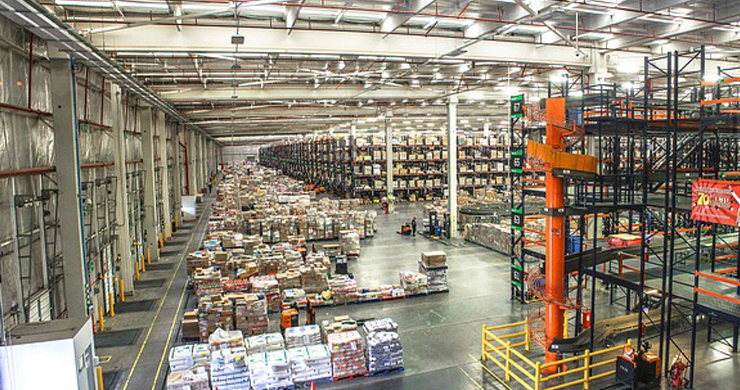In the dynamic environment of warehouse management, efficiency is key to operational and financial success. An inefficient warehouse can negatively impact lead times, operating costs and customer satisfaction. Here are five crucial signs of inefficiency in your warehouse that you should not ignore and how a Warehouse Management System (WMS) can be the solution.
1. High levels of unnecessary inventory
- Sign: Excessive inventory storage is a clear indication of inefficiency. This can result in additional storage costs, product spoilage and tied-up capital.
- WMS solution: An advanced WMS can give you complete visibility of inventory in real time, allowing you to manage stock levels optimally. With tools such as demand forecasting and inventory turns, you can reduce overstock and ensure you only keep what you need.
2. Manual processes and frequent errors
- Sign: If your warehouse still relies on manual processes for picking, packing and inventory tracking, you are likely to face frequent human errors and long processing times.
- WMS solution: The automation provided by a WMS significantly reduces manual errors. Features such as voice picking, the use of bar code scanners and RFID can increase accuracy and efficiency in daily operations.
3. Disorganized storage space
- Sign: A disorganized warehouse, where it is difficult to find products quickly, causes delays in order fulfillment and can result in incorrect shipments.
- WMS solution: A WMS enables the implementation of efficient warehousing strategies, such as chaotic or directed storage. These strategies optimize the use of space and ensure that products are found and retrieved quickly, improving the speed of order processing.
4. Inability to manage high peak demand
- Sign: If your warehouse struggles to keep up during peaks in demand, such as peak seasons or special promotions, it is a clear sign of inefficiency.
- WMS solution: A WMS can help you better plan for and manage peak demand. By analyzing historical data and trends, you can anticipate and adequately prepare for these fluctuations, ensuring that you have the resources and inventory necessary to meet demand without sacrificing service quality.
5. High operating costs
- Sign: High operating costs, which are not justified by productivity and results achieved, are a clear sign of inefficiency. This may include excessive expenditures on labor, equipment maintenance and warehousing.
- WMS Solution: A WMS can identify areas of waste and optimization opportunities. Through automation and improved visibility into all operations, you can reduce labor costs, optimize equipment usage and minimize storage space needed.
Implementation of an WMS
Implementing a Warehouse Management System may seem like a complex task, but the long-term benefits are invaluable. Here are some steps for a successful implementation:
- Needs assessment: Analyze the areas of inefficiency in your warehouse and define the objectives you want to achieve with the WMS.
- Selecting a suitable WMS: Research and choose a WMS that aligns with your specific needs and can integrate with your existing systems.
- Planning and training: Develop a detailed implementation plan and invest in training your staff to ensure a smooth transition.
- Monitoring and continuous improvement: Once implemented, use EMS analysis and reporting tools to monitor performance and make continuous adjustments to improve efficiency.
Ultimately, identifying and addressing these five signs of inefficiency can significantly transform your warehouse. Adopting a Warehouse Management System not only optimizes day-to-day operations, but also prepares you to meet future challenges more efficiently and profitably.





